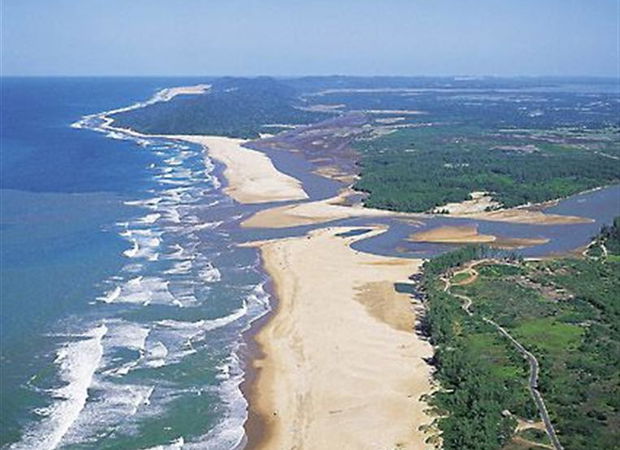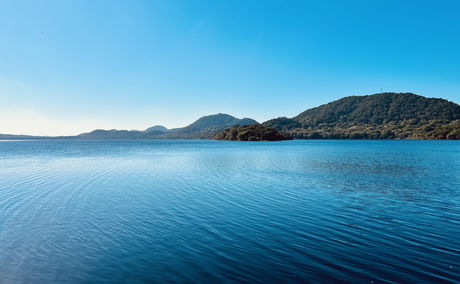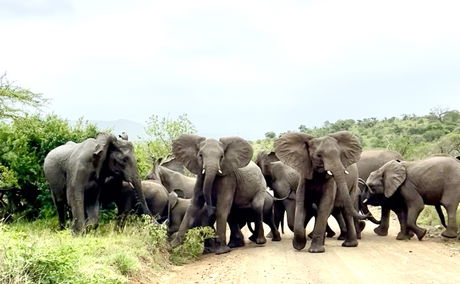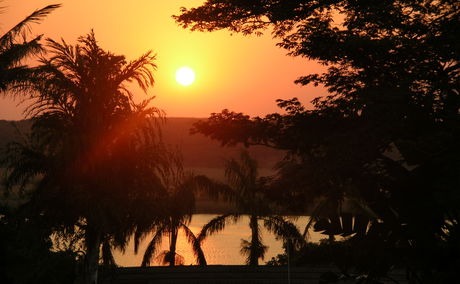There are places in the world where nature seems to follow ordinary patterns, and others where it breaks them entirely. St Lucia, a small, coastal town wrapped in the embrace of the iSimangaliso Wetland Park belongs unmistakably to the latter. This is a landscape where ecosystems blend in improbable ways, where wildlife moves confidently between human spaces, and where the natural world still feels vast, unfiltered and astonishing. It is little wonder...
Discover the Magic of Lake St Lucia, South Africa’s Hidden Gem

Imagine a place where hippos roam the streets after dark, flamingos dance across mirrored waters, and every sunrise feels like a personal gift from nature. Welcome to Lake St Lucia — the shimmering heart of South Africa’s first UNESCO World Heritage Site, the iSimangaliso Wetland Park. This is not just a destination; it’s a wild, living, breathing masterpiece tucked along KwaZulu-Natal’s lush coast.
So, what makes Lake St Lucia truly magical?
A Living Ecological Wonder
Covering over 350 square kilometres, Lake St Lucia is the largest estuarine lake in Southern Africa, and it beats with the pulse of an ancient wilderness. The lake’s unique brackish waters, a fusion of freshwater and seawater, create an ideal environment for life to flourish.
Here, nature thrives in full force:
- 800+ hippos and over 1,000 Nile crocodiles, making it one of Africa’s greatest strongholds for both species.
- A dazzling variety of 500+ bird species, from elegant flamingos to soaring fish eagles.
- A vibrant underwater world of fish, crabs, and aquatic plants that pulse through the lake’s ecosystem.
Whether you're cruising along its surface or scanning the shoreline with binoculars, Lake St Lucia is an ever-changing wildlife spectacle.
Wildlife Encounters You’ll Never Forget
Few places on Earth offer such surreal, up-close moments with wild animals in their natural environment, especially right in town. In the evenings, as you head out to dinner, don’t be surprised if a hippo or two wanders past the restaurant, or if you spot them quietly grazing behind the lodge on a patch of grass. These gentle giants are regular visitors to St Lucia after sunset, and locals know to give them plenty of respectful space.
Take a boat safari across Lake St Lucia’s calm waters and witness crocodiles basking on the banks, hippos wallowing in pods, and herds of waterbuck grazing in the reeds. With birds soaring above and wildlife all around, it’s a front-row seat to one of Africa’s wildest natural shows
A Birdwatcher’s Dreamland
If you love birds or simply appreciate nature’s artistry, then you’re in for a treat. Lake St Lucia is considered one of South Africa’s top birding destinations, and it’s easy to see why.
From clouds of pink flamingos to rare migratory species stopping over during long journeys, the lake becomes a stage for some of the most breathtaking avian performances on Earth. Even casual observers find themselves drawn in by the variety and sheer beauty of birdlife here.
Why It’s a UNESCO World Heritage Site
In 1999, iSimangaliso Wetland Park, with Lake St Lucia at its core, was declared South Africa’s very first UNESCO World Heritage Site. The recognition wasn’t just for its beauty, but for its extraordinary ecological diversity and global importance.
The park is home to:
- Three major lake systems
- Eight interlinking ecosystems
- Over 6,500 plant and animal species, some found nowhere else on Earth
- Both marine and terrestrial environments, including coral reefs, coastal forests, grasslands, and wetlands
UNESCO described it as an area of "exceptional natural beauty and ecological processes." It’s a place where endangered species like the leatherback turtle, black rhino, and coelacanth (a rare prehistoric fish) still find refuge. Its diversity rivals even the best-known parks in the world — and it continues to play a crucial role in environmental conservation, research, and education.
Wild, Yet Wonderfully Accessible
Despite its untamed feel, Lake St Lucia is surprisingly easy to explore. The charming town of St Lucia offers a cozy, laid-back atmosphere and serves as the perfect base for your adventures.
From Lidiko Lodge, you can dive into unforgettable experiences:
- Scenic boat cruises through hippo and croc territory
- Guided birding walks with expert naturalists
- Night drives to see elusive nocturnal animals
- Whale-watching tours (June to November)
- Turtle nesting excursions on remote beaches (November to February)
When to Visit Lake St Lucia
Lake St Lucia is a year-round destination, but each season offers something special:
Winter (May–August): Mild, dry weather with excellent wildlife viewing. Perfect for boat safaris and walking tours. Whale season begins in June.
Spring (September–November): Lush landscapes, baby animals, and bird migration peaks. A photographer’s paradise.
Summer (December–February): Hot and humid, but alive with energy. This is turtle nesting season, and birding is at its best. Afternoon showers are common but short-lived.
Autumn (March–April): Warm days, great for beach walks and game drives.
What to Pack for Your Trip
To make the most of your Lake St Lucia adventure, be sure to pack:
- Lightweight, breathable clothing for warm days
- A light jacket or fleece for cooler evenings and early morning outings
- Comfortable walking shoes or sandals
- Swimwear for beach and pool days
- Sun protection — hat, sunglasses, and high SPF sunscreen
- Insect repellent (especially in summer)
- Binoculars and a camera — there’s wildlife around every corner
- A reusable water bottle for staying hydrated
- A waterproof bag or cover for electronics during boat tours
- Flashlight or headlamp (helpful at night, especially if you spot hippos grazing nearby)
Why Lake St Lucia Deserves a Spot on Your Bucket List
Lake St Lucia isn’t just a destination — it’s a feeling. It’s the thrill of waking up to birdsong and the distant grunts of hippos. It’s the stillness of a pink sunrise reflected on water. It’s the rare chance to unplug from the rush of the world and reconnect with something older, wilder, and truly awe-inspiring.
Whether you’re a photographer chasing golden light, an adventurer hungry for untamed beauty, or a traveller simply seeking serenity with a side of safari, Lake St Lucia will leave you changed.
And when you're ready to experience it all — Lidiko Lodge will be here to welcome you, right in the heart of it all.
Further Reading
There are few moments in life that remind us of nature’s quiet wisdom and unspoken harmony, moments that stop us in our tracks and leave us humbled. One such moment unfolded recently on the iMfolozi side of the Hluhluwe–iMfolozi Game Reserve, when a herd of around twenty five female elephants and their young crossed the dusty road before us. Engines idled. Conversations hushed. And in that stillness, we watched one of nature’s...
There’s something almost otherworldly about arriving in St Lucia. The coastal air carries a mix of salt and forest scent, the streets are shaded by dense tree canopies, and now and then, a hippo might amble lazily down the main road at night as if to remind everyone that this is still their turf. It’s a village where the wild and the relaxed coexist and where international travellers are increasingly finding the...





Share This Post